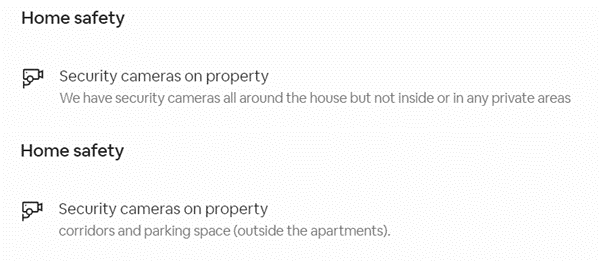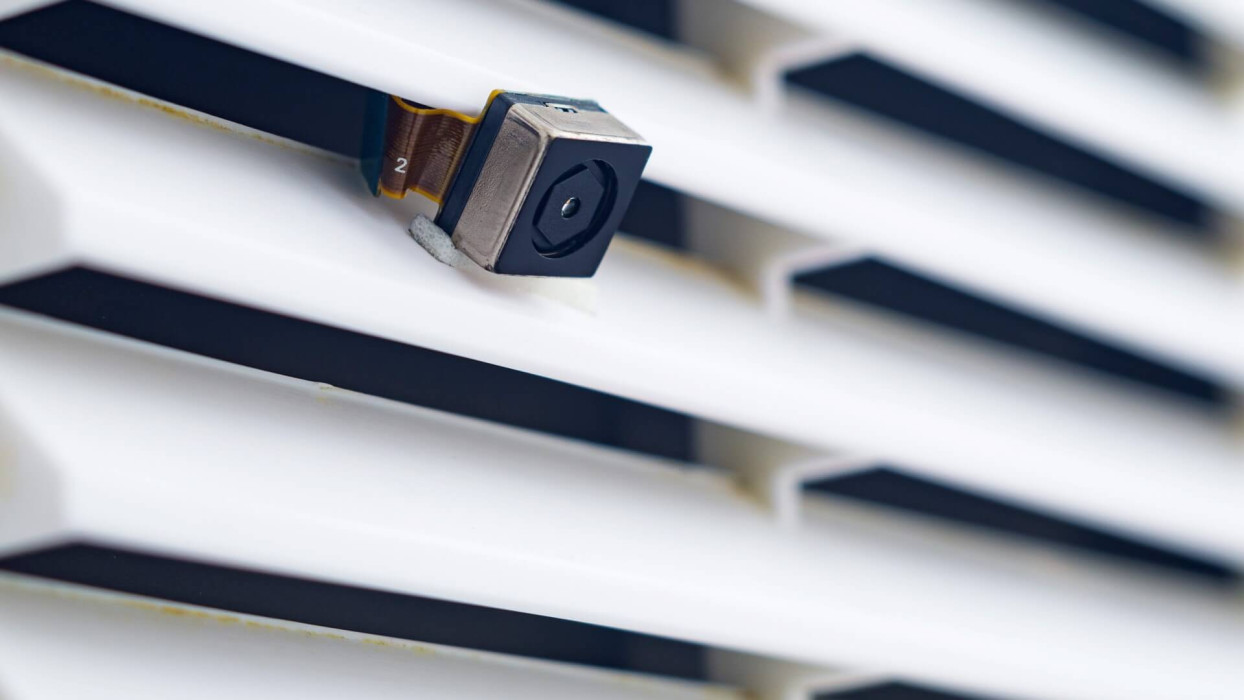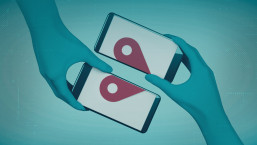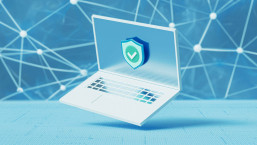Thanks to technology advances, travel has become faster, cheaper and more streamlined for many of us. We can book flights via smartphone apps, check in online, easily overcome language barriers and avoid getting lost. Finding somewhere to stay has also never been easier as technology has opened up a whole new world of travel both for those on a budget and families and couples looking for a stay in more luxurious surroundings.
But technology also brings with it new risks, including when it comes to our privacy. In recent years, some travelers have had their dream vacations ruined by one particularly creepy privacy risk – covert cameras in rental properties, which are often booked via platforms such as Airbnb.
To be sure, this is not intended to scaremonger or feed paranoia – far from it. You’re still more likely to encounter other travel-related cyberthreats, such as Airbnb-themed scams or other common risks to watch out for while travelling. But ours is also a time when all sorts of surveillance gadgets are increasingly affordable; what’s more, these gadgets are often tiny and/or designed to look like everyday objects – they are intended to be difficult to spot, after all.
It is understandable, then, that many people are worried about possibly being watched on camera in their private moments. So much so that the risk gets its turn in the spotlight every time an Airbnb guest takes to social media to share their own horror stories about coming across spy cams in the bedroom or bathroom of their host home.
Watching me, watching us?
Real-world (and known) cases involving spy cams don’t appear to be particularly common, but they do occasionally happen. Here are a handful of examples over the past few years:
- In 2017, internet activist Jason Scott tweeted a picture of an internet-connected spy cam hidden inside a burglar alarm motion detector, which was discovered at an unnamed Airbnb location by a colleague.
- In 2018 a Glaswegian traveler and his girlfriend found a camera hidden inside a digital alarm clock pointed at the property’s bed, in an open plan room. He alerted police in Toronto, where the property was located, after realizing that the host had six other properties.
- In 2019, a New Zealand IT security professional found a live feed from a hidden camera after scanning his Airbnb’s Wi-Fi network at a property in Cork, Ireland. The host was initially exonerated by the website, until the news went viral.
- In 2022, an Airbnb customer discovered a hidden camera located in the property’s bathroom after he heard a clicking sound while getting out of the shower with his girlfriend. The device was apparently set to take photos and transmit them to the user’s device when it detected motion in the room.
- To be sure, other types of accommodation aren’t entirely risk-free either, as evidenced by the case in South Korea where 1,600 people were secretly recorded in motel rooms and the footage was live-streamed online for paying customers.
Under a watchful eye?
A 2019 study by property services firm IPX1301 found that of 2,000 American Airbnb customers, the vast majority (83%) trusted their host. So far so good. But over half (58%) also said they were worried about the prospect of hidden cameras in the property. Additionally, a full 11% of respondents said they had discovered a hidden camera in their Airbnb.
Now, the number may be a far cry from the actual number of cases involving discoveries of spy cams in vacation rentals. Indeed, far from all worries (and reports) about such invasions of privacy seem to have been substantiated.
Making matters even more complex, some owners of vacation rental homes vent their frustrations about their guests on social media, including by releasing footage from legitimate (i.e., fully disclosed) security cameras, along with the guests’ full names. Back in 2019, Facebook shuttered one such group with thousands of members.
What does Airbnb say?
As the market leader in vacation rentals, Airbnb has taken much of the flak for the spy cam incidents. There have also been reports according to which the firm was slow to take customer complaints seriously.
Now, Airbnb’s policy on the matter is pretty unequivocal. Security cameras and noise-monitoring devices are allowed “as long as they are clearly disclosed in the listing description and don’t infringe on another person’s privacy.”

The presence of cameras or other recording devices needs to be disclosed in the property listing (two examples from random Airbnb listings)
In other words, there’s a clear ban on:
- “Concealed and undisclosed devices” which are set to monitor communal spaces. Any such device must be installed “in a visible manner and disclosed in the listing description”.
- Devices located in or monitoring private spaces like bedrooms, bathrooms and sleeping areas like sofa beds. “Disconnected devices are allowed as long as they are switched off and proactively disclosed to guests”.
With over seven million listings worldwide, it’s extremely difficult for the company to police these rules. That means guests may want to get proactive and take matters into their own hands. Indeed, given how creepy the discovery of spy cams can be, why not arm yourself with knowledge on how to avoid this scenario – or at least dispel any lingering doubts?
How to find a hidden spy camera
If there’s even a remote chance that your Airbnb host could be secretly spying on you, it’s time to get serious about protecting your privacy. Channel your inner James Bond with the following tips for finding a hidden spy cam:
- Physically check the room: Sometimes the old ways are the best. Look for cameras hiding in plain sight, perhaps in clocks, smoke detectors, speakers or even light bulbs. If there are any suspicious-looking devices pointed towards beds or showers, they may be worth extra investigation.
- Use a flashlight: Camera lenses are made of glass, meaning they’re reflective. So turn the lights down and shine a flashlight around the property to check if there may be something hiding in a household appliance or piece of furniture.
- Check for night vision lights: Turning the lights down or off will also help you spot the tell-tale red or green LEDs which may illuminate on night vision cameras. Be slow and methodical as you move through the property as they can be fairly small.
- Use an app: Researchers have been working on a mobile application that uses phones’ Time-of-Flight (ToF) sensor to find spy cams hidden in everyday objects. There are also apps and other software that can scan networks not just for weaknesses, but also help you find connected devices on it. In a modern property there may be quite a few smart home devices, however, so telling innocuous devices from the suspicious ones may not always be a straightforward proposition. It’s also possible that some hosts may be using another network within the property to spy on their guests. While you're at it, don’t scan the Wi-Fi networks of your neighbors.
- Detect RF signals: A final tell-tale sign of a hidden camera is to monitor for radio frequencies (RF) which the camera may be using to connect to a hidden network. There are devices available to scan for this activity, although they can be quite expensive. An alternative option is to make an outbound call to a family member or friend and walk around the property. A hidden camera may interfere with your phone signal, so stop and investigate.
Depending on what you’ve found (or haven’t found), it’s your call what to do next. Call the police, inform Airbnb, move out and demand a refund. Or kick back and continue your stay safe in the knowledge there’s nothing to worry about.
RELATED READING: 8 questions to ask yourself before getting a home security camera





